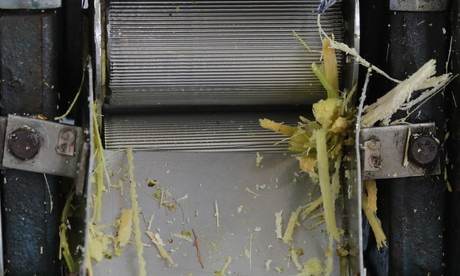Sweetening the sugar industry's energy efficiency

The typical American currently consumes 35 kg of sugar every year, which keeps the sugar industry vibrant. Now electrification in sugar milling is making the industry more energy efficient.
Humanity has had a strong relationship with sugar for at least the last 10,000 years. Yet it was only in the 1700s that a mechanised means of producing sugar emerged, using steam engines for production. Surprisingly, steam power is still prevalent. In a time when energy efficiency underpins competitiveness of manufacturers you need to ask: how efficient is your sugar milling process?
It’s fair to say that the human race is hooked on sugar. What started as an almost religious ingredient in ancient New Guinean culture has spread globally and, over the course of 10,000 years, come to underpin the modern food industry. In 1800, it is estimated that the average person in the US ate the equivalent of 8 kg of sugar every year — a number that rose to 45 kg per year by 1900. In the words of author Rich Cohen for National Geographic, “Sugar was the oil of its day.”
With such a sugar-hungry market, sugar manufacturers’ main focus is remaining competitive. This involves increasing throughput and, more often, improving energy efficiency to reduce costs.
From ABB’s experience in working with sugar businesses, one of the biggest areas of energy inefficiency is the sugar milling process. While the first steam-powered sugar production machine was introduced in the 1700s, many sugar plants continue to use steam as a way of powering milling equipment.
Theoretically, this makes sense: bagasse, a by-product of sugar production, can be fed into boilers to generate steam that powers turbines that operate milling systems. This creates a circular economy in the manufacturing plant.
This does make good use of waste by-product, but it is often unreliable and inefficient due to the energy expended. Instead, manufacturers are investing in energy-efficient motors and drives to electrify the process. Using a variable frequency drive (VFD), in addition to a high-efficiency electric motor and a generator, allows engineers to not only have greater control over the energy usage of the milling equipment, but also reduce energy costs by up to 40%.
For example, ABB recently worked with a sugar mill in Pakistan to deliver a similar project. The mill had previously relied on steam turbines to power its crusher, using bagasse as its sole source of energy. ABB worked with the mill to modernise its systems, allowing it to use the bagasse to create steam, and that steam was used to turn a generator. The electricity produced fed a high-efficiency motor and an ABB drive powering the mill.
Due to the motor’s design, it provides uptime despite the harsh operating conditions — avoiding remnants of sugar cane fibres interfering with the motor. This new system required only 350–400 kW of power compared to the 650–700 kW of the previous system power, providing a saving of more than 40%.
With the world’s love affair with sugar unlikely to come to an end any time soon, significant energy savings such as this are a necessary factor in remaining competitive. By looking at ways to improve existing processes and modernise equipment, plant managers and engineers can ensure their company is primed to reap the full benefits of the sugar rush.
Six beverage trends predicted for 2026
Demand for customisation, 'protein-ification' and sustainable storytelling are some of...
Making UHT processing less intensive on energy
A nutritional beverages company was seeking a more sustainable way to produce UHT beverages using...
Tasty twist for chocolate alternatives
Food scientists develop two novel flavour-boosting techniques to transform carob pulp into a...











